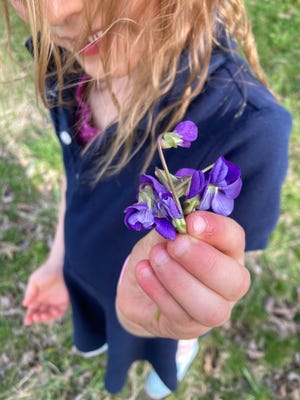
"Weed" is a word that immediately attracts a negative response. It's easy to understand why since a weed is defined as an "unwanted plant." But one person’s weed is another person's flower. This is especially true in today’s age of sustainable gardening.
My generation was taught to eliminate weeds. If you did not take care of the weeds in your yard, you risked becoming the scourge of the neighborhood. In the sustainable world, weeds are appreciated as useful plants – especially for pollinators. I choose not to take sides in these discussions, as I respect everyone’s right to care for their yard as they choose. You can choose to have a free-range yard without grass to the benefit of the environment. If you want a traditional yard with a pure carpet of grass, here are some tips on how to control the weeds.
It's mulching season:Don't get caught up in 'Mulch Madness' this spring
How to remove weeds from the lawn
The first strategy is to apply pre-emergent weed control to the lawn and landscape beds. This keeps the weed seeds from growing. These products can eliminate up to 95% of the weeds you could potentially be dealing with later. These products will not have any effect on perennial weeds. These are weeds that survive the winter, growing back from the roots in the ground.
Most of these weeds are classified as broadleaf weeds. This is because they have leaves instead of blades like grass. Dandelions, clover, chickweed, and bittercress all fall into this category. These weeds are easy to control with selective herbicides. They are called "selective" because they kill the weeds without hurting the grass.
A great product to use on these types of weeds is Fertilome’s Weed Free Zone. This product works very fast, killing the weeds, roots and all in less than a week. It is also great to use in a wide range of temperatures. It will work in temperatures as chilly as 45 degrees.

How to kill the weeds that keep coming back
Unfortunately, there are some weeds that are very difficult to kill. The two best examples are wild violets and wild buttercups. Wild buttercups are also known as lesser celandine. These weeds grow from rhizomes in the soil. Rhizomes are very thick stems below the soil between the roots and leaves. Weeds growing from rhizomes are very difficult to kill because the rhizomes stay viable even when sprayed with herbicides. When you spray these weeds, you'll think you have killed them as the tops die. Then a few weeks later you will notice the weed right back where it started.
These weeds can sometimes be impossible to kill, especially if they have become established over several seasons. If you are going to attempt to kill them, you should use an herbicide called Triclopyr Ester. It is the strongest selective herbicide available to homeowners. Yet even with this product, rhizomatous weeds will require multiple sprayings. The goal is to keep eliminating the foliage until the rhizome and roots die.
What to NOT do in your lawn
One product I would not recommend is a "weed 'n' feed" fertilizer. This is a product that combines fertilizer with a granular broadleaf weed killer. One reason is that granular herbicides need to be applied to moist grass for the product to stick to the foliage. Liquid herbicides are more effective, as they are absorbed into the foliage.
Another reason I do not like these products is that you are paying for – and applying herbicide to – the entire lawn, most of which has no weeds. Liquids are more efficient and economical because you are only using them where the weeds are.
One last recommendation I will make is to not eliminate the weeds before they flower. Allow them to flower so the pollinator insects can do their work. Many weeds flower early, when these insects have limited resources. This should be an easy compromise that will benefit all.
Source link









